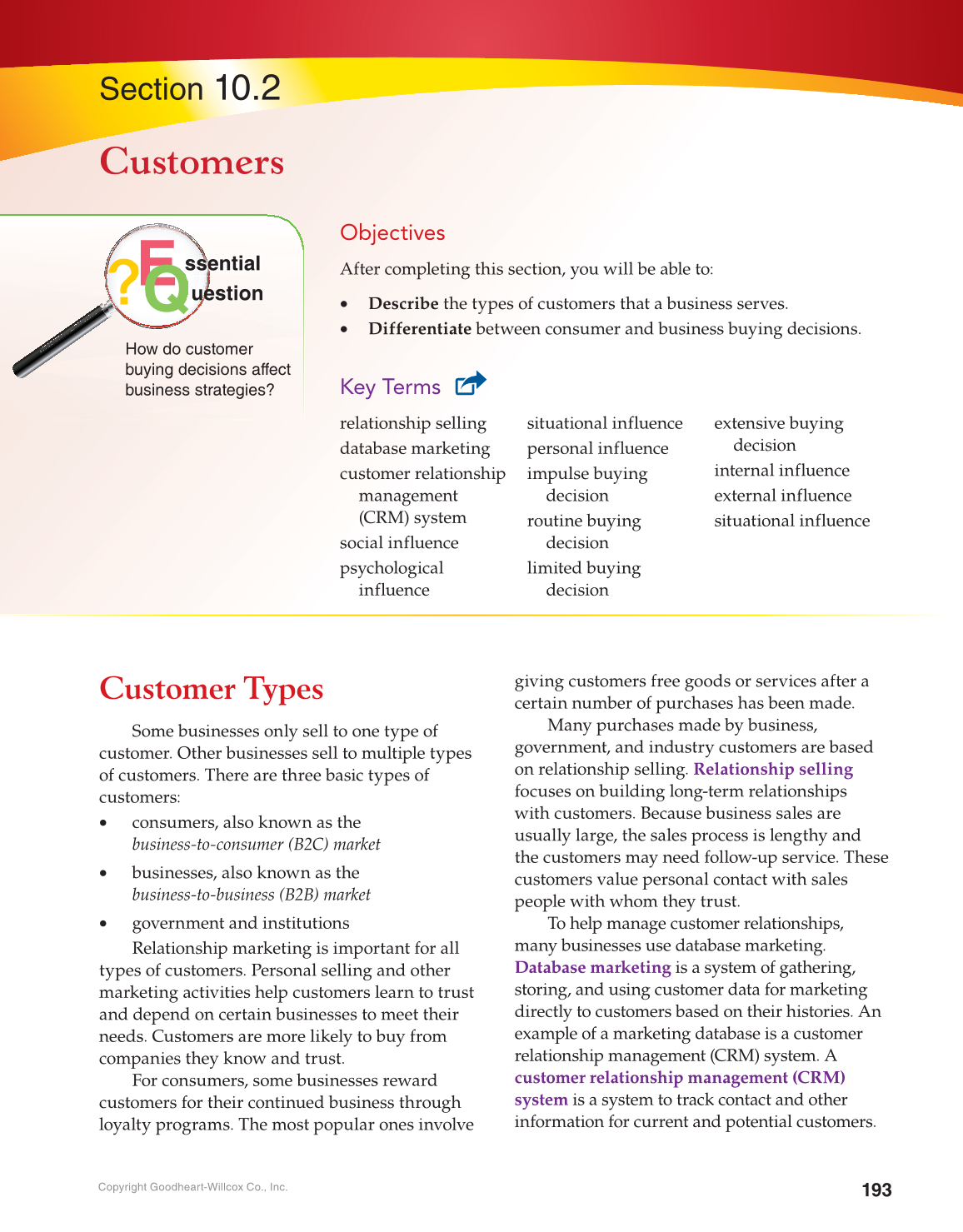193
Copyright Goodheart-Willcox Co., Inc.
Customer Types
Some businesses only sell to one type of
customer. Other businesses sell to multiple types
of customers. There are three basic types of
customers:
• consumers, also known as the
business-to-consumer (B2C) market
• businesses, also known as the
business-to-business (B2B) market
• government and institutions
Relationship marketing is important for all
types of customers. Personal selling and other
marketing activities help customers learn to trust
and depend on certain businesses to meet their
needs. Customers are more likely to buy from
companies they know and trust.
For consumers, some businesses reward
customers for their continued business through
loyalty programs. The most popular ones involve
giving customers free goods or services after a
certain number of purchases has been made.
Many purchases made by business,
government, and industry customers are based
on relationship selling. Relationship selling
focuses on building long-term relationships
with customers. Because business sales are
usually large, the sales process is lengthy and
the customers may need follow-up service. These
customers value personal contact with sales
people with whom they trust.
To help manage customer relationships,
many businesses use database marketing.
Database marketing is a system of gathering,
storing, and using customer data for marketing
directly to customers based on their histories. An
example of a marketing database is a customer
relationship management (CRM) system. A
customer relationship management (CRM)
system is a system to track contact and other
information for current and potential customers.
E
Q
ssential
uestion
How do customer
buying decisions affect
business strategies?
Objectives
After completing this section, you will be able to:
• Describe the types of customers that a business serves.
• Differentiate between consumer and business buying decisions.
Key Terms
relationship selling
database marketing
customer relationship
management
(CRM) system
social influence
psychological
influence
situational influence
personal influence
impulse buying
decision
routine buying
decision
limited buying
decision
extensive buying
decision
internal influence
external influence
situational influence
Section
10.2
Customers
